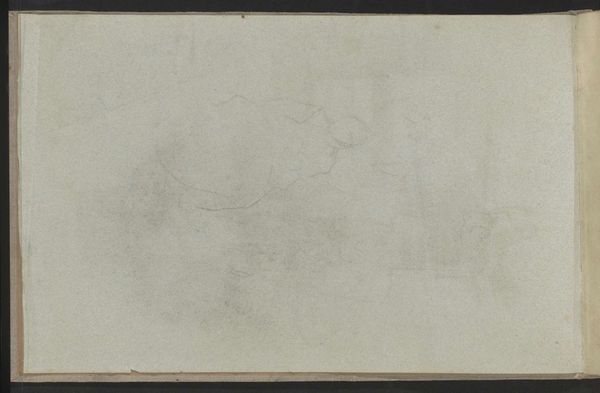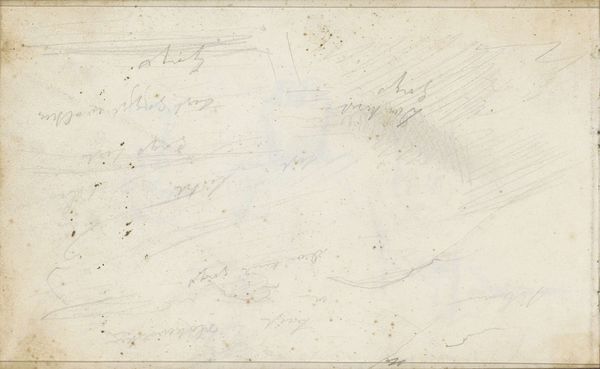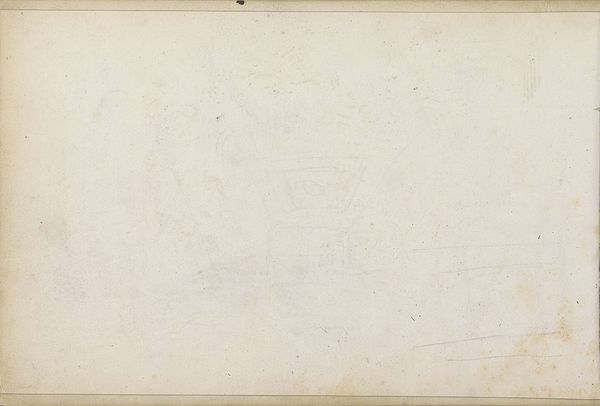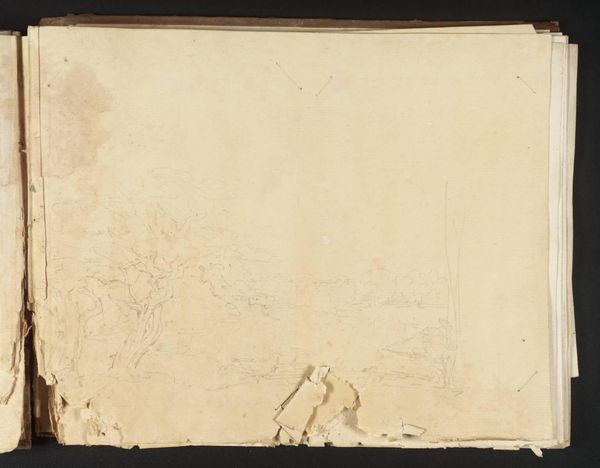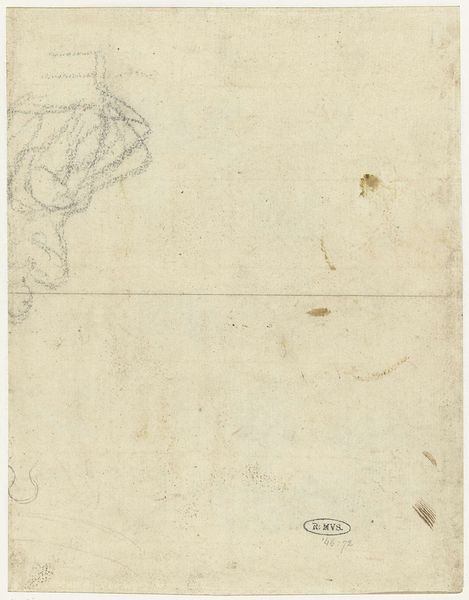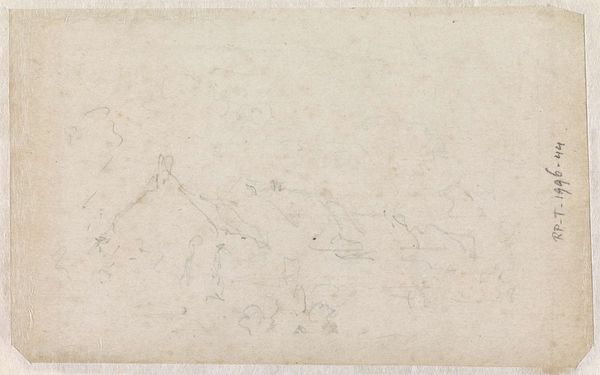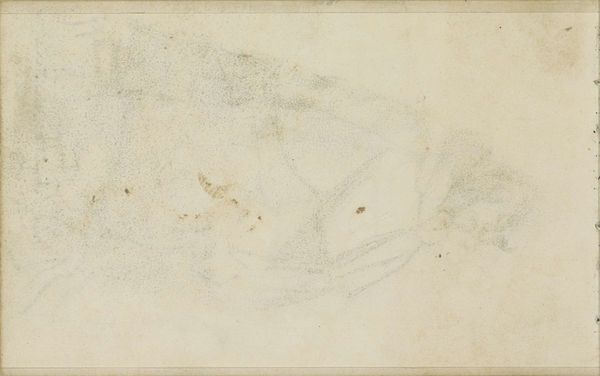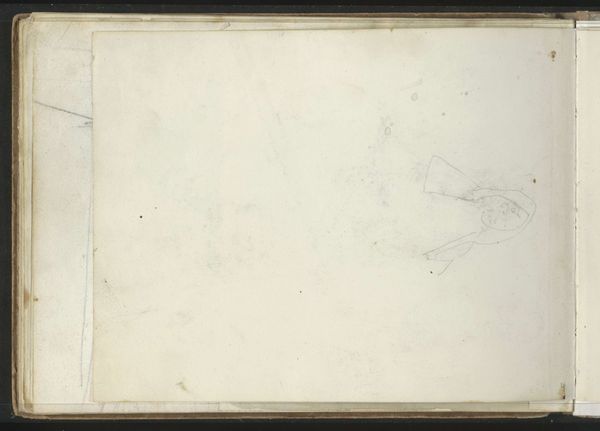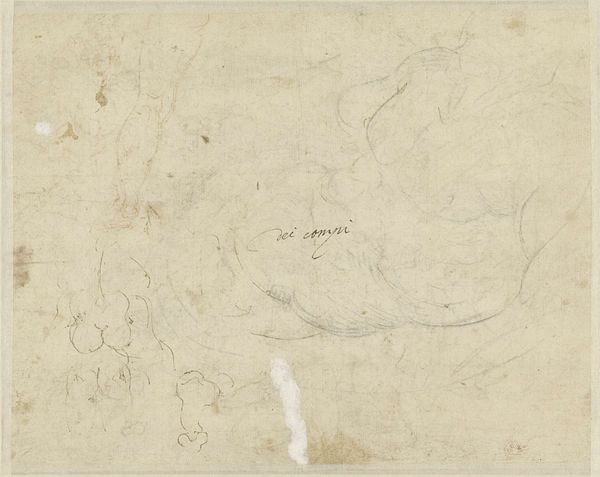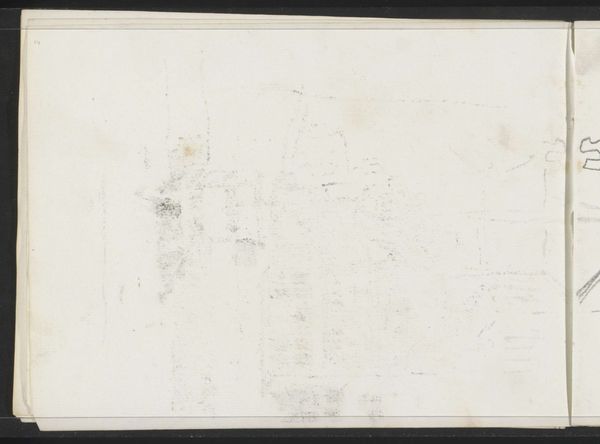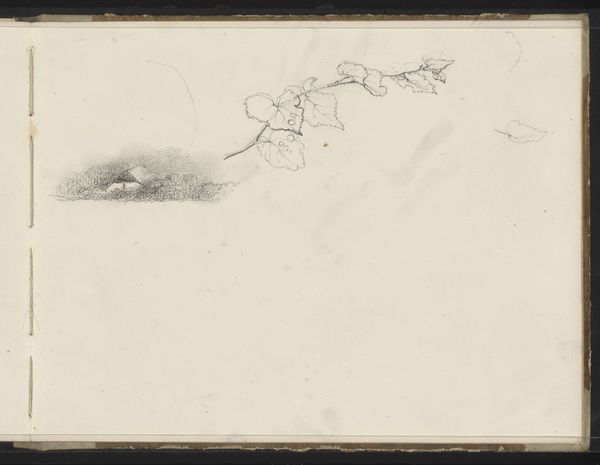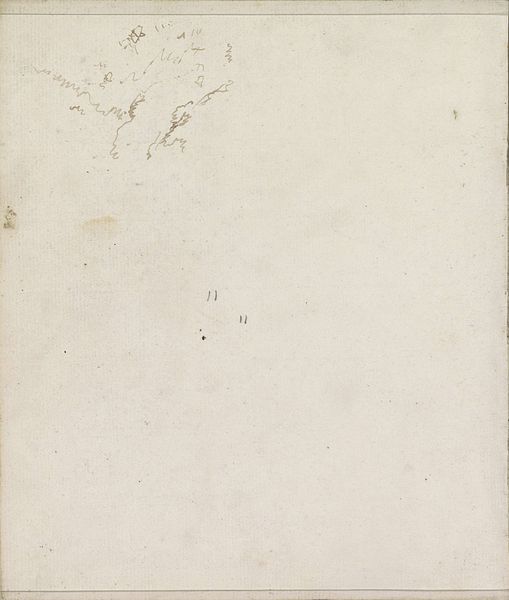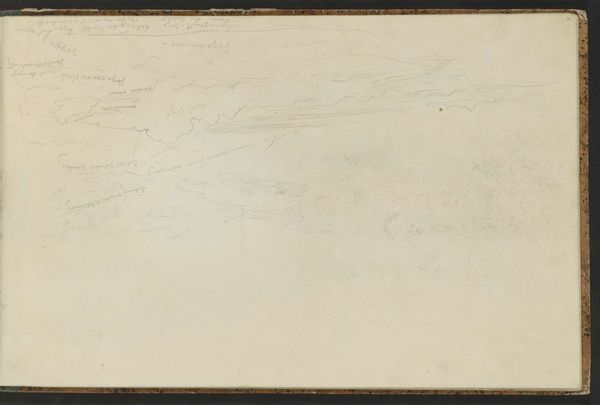
drawing, paper, pencil
#
drawing
#
aged paper
#
toned paper
#
light pencil work
#
sketch book
#
hand drawn type
#
landscape
#
paper
#
personal sketchbook
#
idea generation sketch
#
sketchwork
#
romanticism
#
pencil
#
sketchbook drawing
#
sketchbook art
Copyright: Rijks Museum: Open Domain
Curator: The wispy quality of the marks on the right side immediately grab my attention. Is that the suggestion of a landscape emerging from a blank slate? Editor: Indeed! Here we have “Notitie,” a pencil drawing by Johannes Tavenraat, created sometime between 1840 and 1841. It resides right here at the Rijksmuseum. The drawing offers a glimpse into the artist’s sketchbook, and the materials employed create a particular tone. Curator: Yes, that aged paper adds to the feeling that we’re looking at something precious and ephemeral, like a half-formed memory. It also creates such a strong contrast to the confident script on the left page. It’s all contained within what appears to be a notebook format, each side carrying distinct cultural signals. The left page bearing inscription alluding to authority, whilst the other page has an unbridled essence of place. Editor: Structurally, the composition guides our eye across a dichotomy. We move from the sharp, definite angles of the inscription to the fluid, undefined shapes in the sketch. It creates this play between the certainty of language and the ambiguity of lived experience. Curator: Absolutely. The landscape sketch, though simple, evokes the romanticism of the era. Think about the psychological weight of landscapes during this time, acting as expressions of freedom and longing. What do you think about the tower-like element off the left side of the sketch, bisecting that same page, what cultural signals does that emit? Editor: Good observation. The tower becomes almost like a symbolic bridge, linking the textual and visual realms. It also emphasizes the verticality of the drawing, pulling our gaze upwards. Curator: So, looking at this 'Notitie', it is so compelling to see how an artist's personal observations carry such historical depth. Editor: I agree, it is through the close examination of its materials and formal properties that we discover how much more complex a simple sketch such as this can become.
Comments
No comments
Be the first to comment and join the conversation on the ultimate creative platform.
